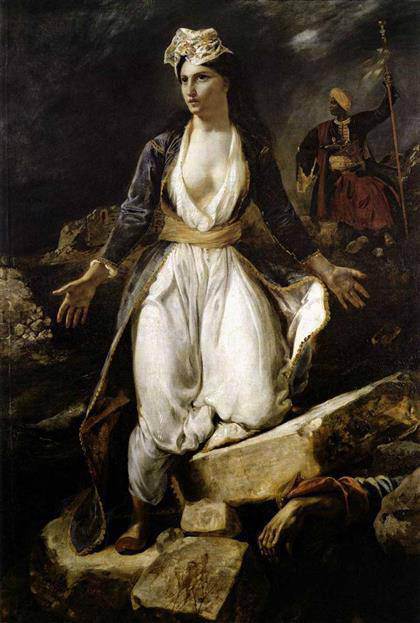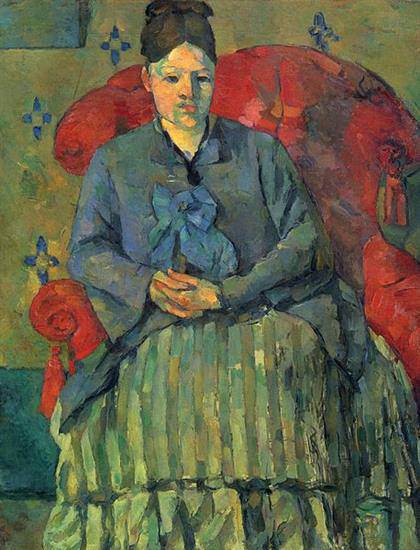
Eugène Delacroix
“Greece on the Ruins of Missolonghi”, 1826
LACMA exhibits a monumental masterwork by Delacroix The Los Angeles County Museum of Art (LACMA) presents Delacroix’s ‘Greece on the Ruins of Missolonghi’, featuring the monumental painting, on view for the first time in Los Angeles. November 16, 2014–February 15, 2015.]]>
Source: The Los Angeles County Museum of Art
Painted in 1826 by Eugène Delacroix, the leading French Romantic painter of the day, Greece on the Ruins of Missolonghi is one of the most celebrated French paintings of the 19th century. The work is held in the Musée des Beaux- Arts in Bordeaux, France, and has seldom traveled.
Delacroix, like many European artists and intellectuals, was a fervent supporter of Greek independence. In direct response to the fall of the besieged city, the artist created “Greece on the Ruins of Missolonghi” in about three short months in time for an exhibition at a private gallery in Paris, which was erected solely to plead the Greek cause. Along with over 200 paintings exhibited alongside it, “Greece on the Ruins of Missolonghi” was intended to generate support and persuade the politically conservative French monarchy to change their course of tacit acceptance of the massacre of thousands of Greek citizens. Two years later the French joined British and Russian forces and permanently ended 400 years of Greek subordination to Ottoman rule.
The picture is dominated by a confronting, emotional, over life-size allegory of Greece, who stands with bended knee at center, pleading for help. Her foot, bearing a red slipper, points to the blood-stained ruins of the exploded city, and the hand of the dead is an indication of the bodies beneath the rubble. At the upper right, a triumphant turbaned warrior proudly bears his sabre and standard as a strong and noble pronouncement of victory.
“This exhibition is an extremely rare opportunity to showcase a masterwork by one of the 19th century’s most important painters,” said Leah Lehmbeck, curator of European Painting and Sculpture at LACMA. “The picture itself is profoundly rich with political, cultural, and artistic detail, and therefore speaks to a range of issues through its engaging dramatic context.”
Related content
Eugène Delacroix at CaixaForum Madrid (exhibition, 2011)
Follow us on:


